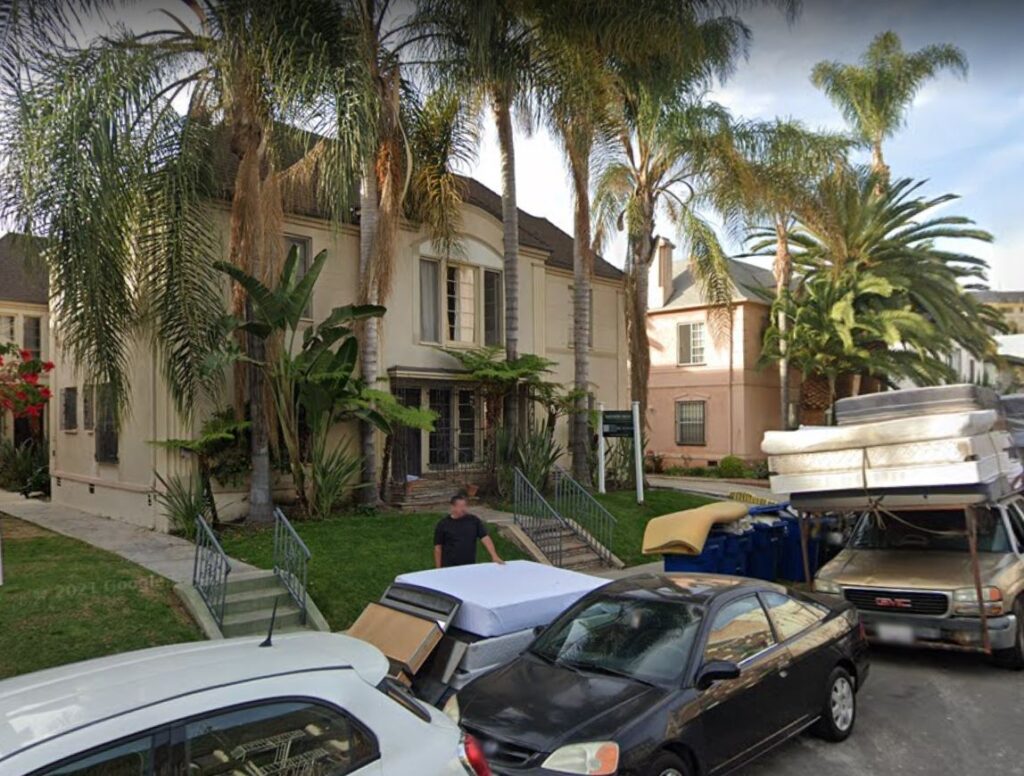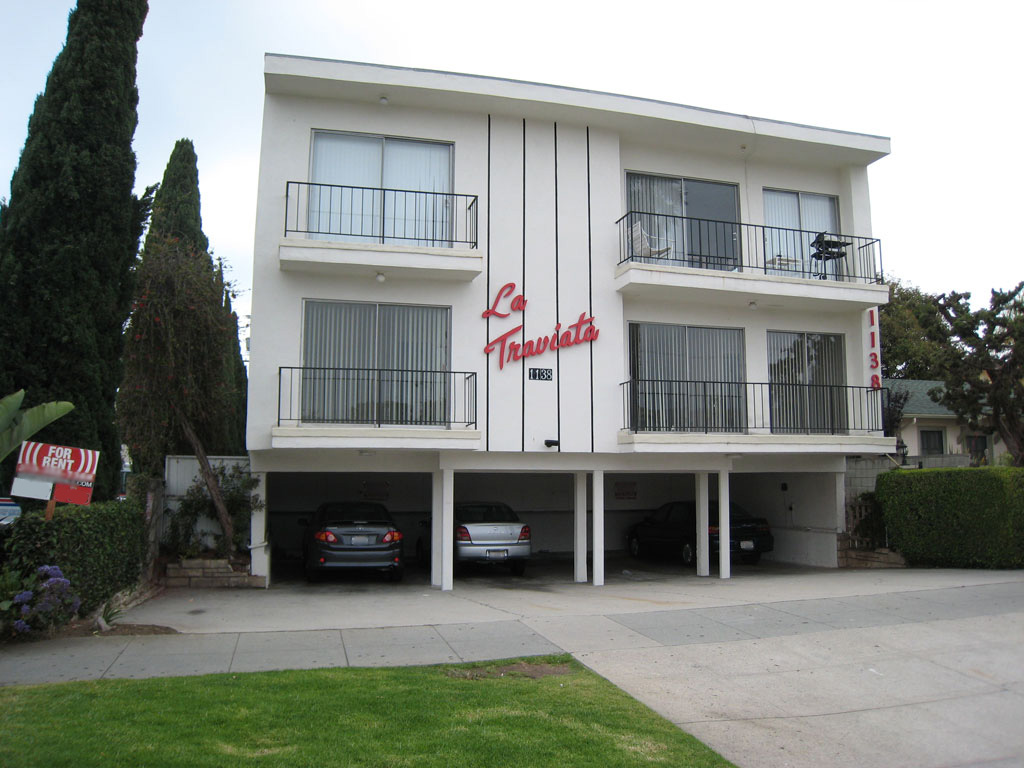If there was a time when the California Dream seemed to match up with reality for most of its people, it was the mid-20th century on either side of World War 2:
The California Dream meant an improved and more affordable family life: a small but stylish and airy house marked by a fluidity of indoor and outdoor space, such as the ubiquitous California bungalow and a lush backyard …. I t meant very good jobs, excellent roads, plentiful facilities for outdoor recreation, and the schools and universities that were the best in the world.
Here’s that world on the Miracle Mile of Wilshire Boulevard in the 50s, just the way developer A.W. Ross intended: driving unencumbered at 30 mph through a spotless deco/moderne commercial landscape:
At 4:00 on the video, you’ll see the western anchor of the Miracle Mile – the May Co. department store. It’s still there:
Today at Fairfax and Wilshire, it has become the Academy Museum of Motion Pictures, the latest in a complex of cultural institutions as important as those downtown at Grand and 2nd. Only this one will be anchored by the D Line Metro stop in 2024.
Here’s that intersection in 1940:
What captured my eye (in addition to the irony of the Metro station being built where the Mobilgas sign dominates) are the residential blocks to the northwest.
Let’s go in for the close-up:
For two blocks north of Wilshire, the urban form consists of small apartment buildings with garages off narrow lanes. They are still there too:
Though it looks initially like a large single-family house with one front entrance, there appears to be about 15 units in this building, likely built in the late 20s or early 1930s, with some covered parking along the side:
Indeed, the whole streetscape, a block from Wilshire and Fairfax, is an intact example of the Southern California style of that era:
Los Angeles had early in the 20th century developed a ‘missing middle’ prototype in a faux-Mission style for the suburbs rapidly expanding towards the mountains and beaches. That mix of single- and multiple-family densities still functions well, looks good and is undoubtedly profitable (one suite in the building above rents for $2,500 US).
Of course I had to find out the zoning:
Sure enough, within a block or two of major arterials and in some of the streetcar suburbs, you can find the R or RD-2 and -3 zones – the model for missing-middle zoning. (You can find more in A Short Introduction to Zoning in Los Angeles.)
Despite the considerable amount of orange on the zoning map in southeast LA, housing advocates have nonetheless identified the still-missing problem: “The lack of developable R-3 and R-4 zones in LA is one of the biggest roadblocks to constructing new apartments for ordinary people.”
And why is there a shortage? Perhaps because previous Angelenos, who today may find the earlier R-2 and -3 zoning worthy of heritage preservation, didn’t really like what happened after 1935.
In 1935, Los Angeles began to require one off-street parking space per dwelling unit for multifamily housing …. (It) required a garage building on the same lot as the main building … to ensure that the space would remain available for cars. Planners suspected that if only surface parking were required, it could easily be converted to the other uses, such as a garden, without a permit. (Emphasis added.)
Ah yes, parking, always about the parking. You won’t be surprised to learn that this quote comes from “The High Cost of Free Parking” by UCLA planning prof Donald Shoup, who also makes the connection to something characteristically LA:
… this requirement surely contributed to the postwar epidemic of dingbats with offstreet parking spaces that are covered but not out of sight.
This is a dingbat:
You’ll find them especially in districts like Hollywood (there are even some in Vancouver) – not well loved but invaluable as more affordable housing, even though the 1935 zoning law actually reduced the practical number of dwelling units that could be built because of that parking requirement.
So why not rezone the single-family zones to R(D)-2, -3, reduce the parking requirement, and require more affordable units? It’s more or less what’s being advocated for the Vancouver city-wide plan, and it might help – over time. But the problem with both cities is that they’re full. There are hardly any empty lots on which to build the 21st-century version of what LA had refined a century previously, and the gradual evolution of neighbourhoods will be just that – gradual. And not necessarily more affordable. Such an action alone would not be sufficient without a version of the Grand Bargain to pile up density somewhere that doesn’t require a substantial change in existing neighbourhoods.
Los Angeles has looked to Vancouver to see what we came up with to address our housing demand, and what they saw, of course, were megaprojects and station areas along SkyTrain lines that are boggling in comparison to what they’ve done. So, as you can guess, our Sister City who looked with envy to her sibling decided she liked what we’re wearing.
As you’ll see in the next revelation.
























Good reporting, thanks Gord. Once more (there are many other examples), LA is showing the way to Vancouver and not the other way around, as is much more commonly assumed both locally here and down there.
Now if only the City of Vancouver folks doing the Broadway Plan would pay more attention to densification models such as these and many others, and include them in the draft Plan, we would have a far better Plan and not see “Areas for Taller Buildings” drawings showing 12-18 storey towers along established residential streets that are well away from rapid transit stations, with densities and building heights increasing as you get closer to the stations.
Yeah, I was going to say – shouldn’t that be ‘ LA is looking to Burnaby’?